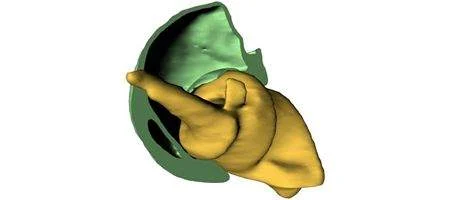A screw-and-nut system has been discovered for the first time in nature, in the hip joint of a tiny weevil.

The hip of Trigonopterus oblongus isn’t based on the usual hinges or ball-and-socket joints, but of joints based on a screw thread system. It’s about half a millimeter in size.
“Such a construction for animal leg movement is quite unusual, as large areas of skeletal parts move on top of each other. Supply of the leg takes place via a very small opening in the center of the screw,” says Thomas van de Kamp from Karlsruhe Institute of Technology.
Three-dimensional image reconstructions of the joint of Trigonopterus oblongus were made using the microtomograph of the ANKA synchrotron radiation source.
“We found that nature was first in inventing screws and nuts, because weevils have been using this construction for about 100 million years already,” says Alexander Riedel from the Karlsruhe State Museum of Natural History.
As a rule, weevils are pretty clumsy. Using a screw joint rather than a hinge, however, allows them to move their legs further down, which makes them better climbers. This has important advantages, as Trigonopterus oblongus lives on twigs and foliage in the jungle of Papua New Guinea.
For feeding, the thorn is pushed into the plant tissue, while the hind legs provide a strong foothold.
“Meanwhile, we have also studied other weevil species and always found screw joints,” say the researchers. “Obviously, this joint exists in all weevils, of which more than 50,000 species exist worldwide.”






